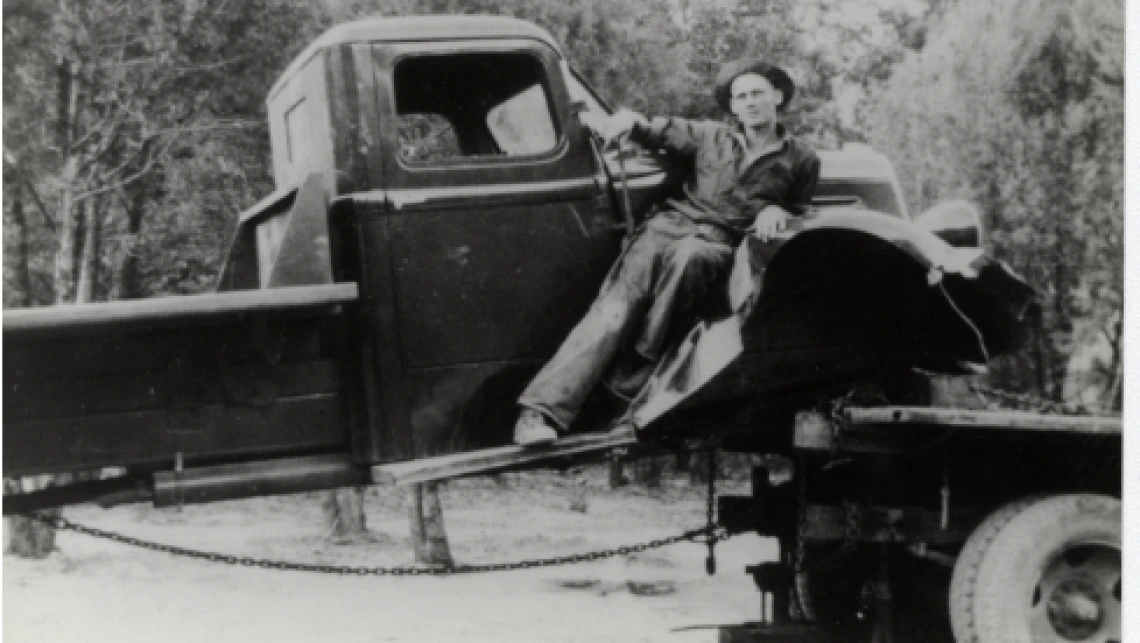Robert Black Civilian Conservation Corps collection

Unidentified man posing on truck, circa 1933.
Collection area: Political Affairs
Collection dates: 1930s-2000s
The collection includes C.C.C. former enrollees’ biographical files and general correspondences, people’s photos, slides, cassette tapes, VHS tapes, memorabilia and C.C.C general government enrollment data. The materials are divided into three series: Files, Photographs and Research file. The first series is arranged alphabetically by files’ format. The second series is divided by its formats into two subseries: prints and slides and negatives. Then each subseries is categorized alphabetically by its subjects. The third series is categorized by files subjects.
Robert Black was a volunteer historian for the National Park Service assigned to the Chiricahua National Monument. During his time there he began to research NM-2-A one of the many camps in Arizona where young people served in President’s Franklin D. Roosevelt’s “tree army” better known as the Civilian Conservation Corps (CCC). Robert Black accumulated a considerable number of interviews and photographs of former CCC enrollees with the intention of one day publishing a commemorative booklet of the NM-2-A.
The Civilian Conservation Corps (CCC) was established by President Franklin Roosevelt in 1933. It was a Depression Era program designed to provide jobs and relief for unemployed youth and their families. The majority of jobs were unskilled manual labor for the purpose of developing the natural resources in rural areas of the United States and its territories. From 1933-1942 there were 52,905 enrollees working in Arizona CCC camps. They built 5,783 miles of forest roads, constructed 3,559 miles of telephone lines and developed numerous recreational sites still used by Arizonan’s today. The program ceased to exist in 1942 when the United States Congress eliminated its funding.
A collection guide explains what's in a collection. New to using our collections? Learn how to use a collection guide.
Collection guideThe collection has materials you can access online.
Access this collection
Visit us in person to access materials from this collection. Our materials are one-of-a-kind and require special care, so they can’t be checked out or taken home.
How to cite
Learn how to cite and use materials from Special Collections in your research.
